
Test Drive: 2021 Ford Bronco Sport Outer Banks vs Badlands
Story and Photos: Ben Stewart
The wait is almost over. Ford’s all-new, retro-inspired and highly capable “big” Bronco is nearly ready to hit the trail. Delays caused by the pandemic have pushed the start of Bronco production back to May. So this spring, Broncos will begin to roam the roads—and we can’t wait to get our paws on one to test.
But not everyone has to wait to have a Bronco experience.
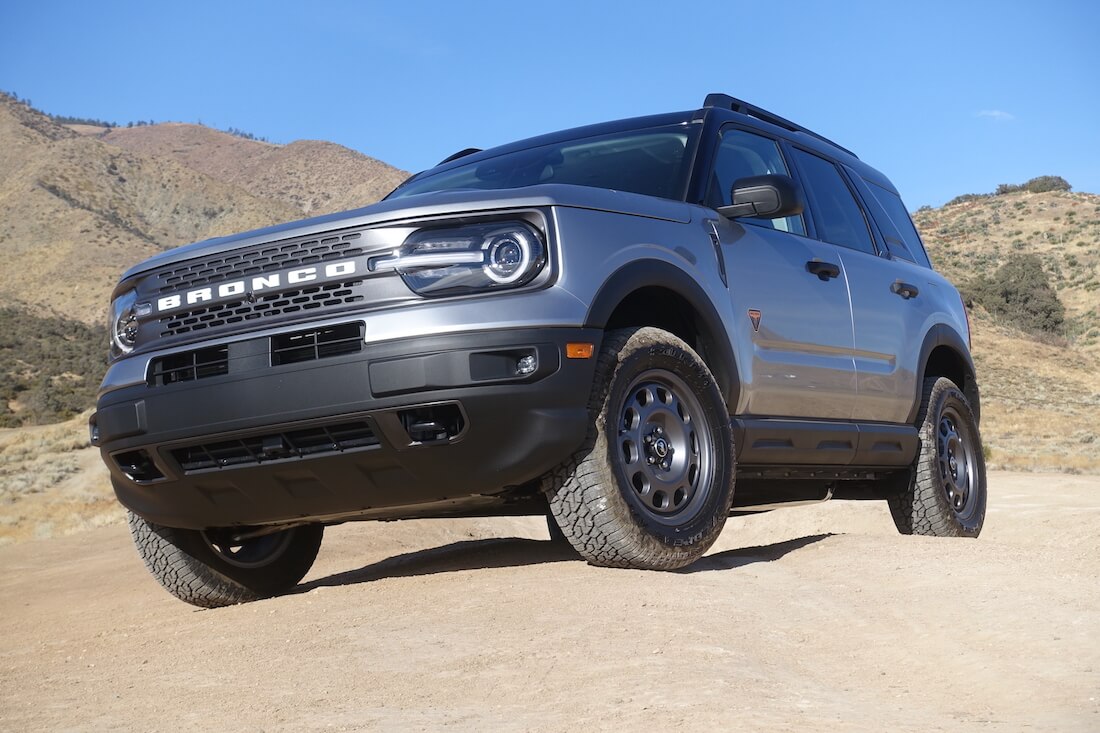
Ford’s smaller Bronco Sport takes on some of the styling elements from its big brother but makes it in a more palatable package for those that don’t need as much off-road capability. The Bronco Sport is a crossover SUV that uses a car-like unibody chassis with four-wheel independent suspension. It’s based on the bones of the Ford Escape—a vehicle more adept at exploring dirt roads than real back country travel. But the Bronco Sport has some upgrades that make it more trail-worthy and we wanted to find out if this little tyke was deserving of the Bronco nameplate and something worth taking on an off-pavement adventure.
We borrowed two versions of the Sport a few weeks apart to figure out the performance differences in each package. The first one we tested was a $32,840 Big Bend that has the standard 4WD system. And we spent a half day exploring the terrain around Hungry Valley SVRA in Gorman, CA to find its limits. A few weeks later we returned to the park in a $35,745 Badlands model. The Badlands is the most capable model in the Bronco Sport line and comes with a long list of equipment and modifications that aren’t offered on other Sport models.
So, how capable could the new Bronco Sport really be? Turns out, the Sport’s moves in the dirt might surprise you. They both certainly impressed a few Wrangler and one Xterra owner that stopped along the trail to watch us ‘wheel. Here’s what we learned.
The Hardware
The Bronco Sport rides on a version of the Ford Escape’s car-like monocoque chassis. But the two vehicles are not the same. The Bronco Sport rides on a 1.6-inch shorter, 105.1-inch wheelbase and has its overall length trimmed by 8.4-inches. And though the structure and suspension are similar in design to the Escape, the Bronco Sport receives its own suspension engineered for more wheel travel.
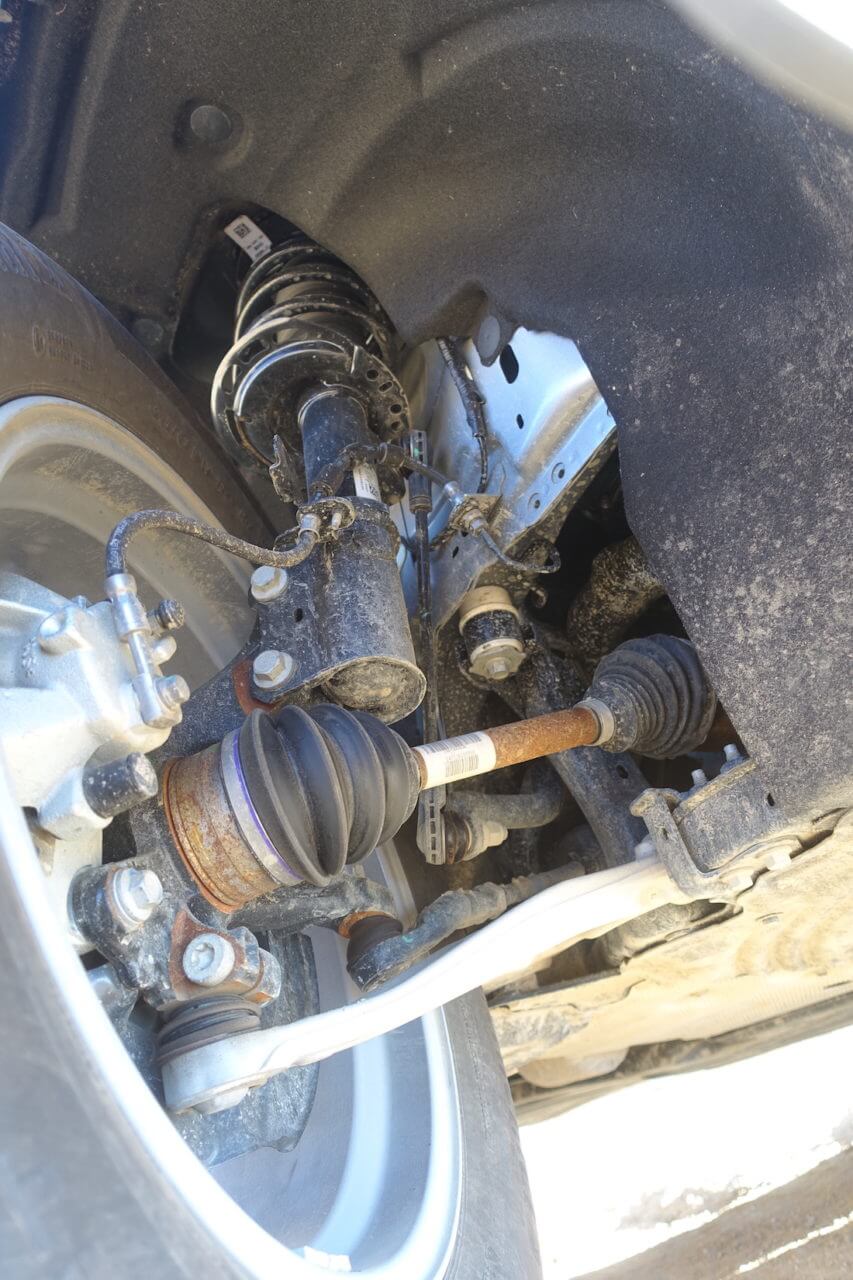
The front suspension of the Bronco Sport uses a MacPherson strut design with twin-tube gas shocks and aluminum lower links and has 7.44 inches of wheel travel. There’s an open differential here and unfortunately nothing underneath wears any protection. All the “skidplating” on this Big Bend model—is plastic.
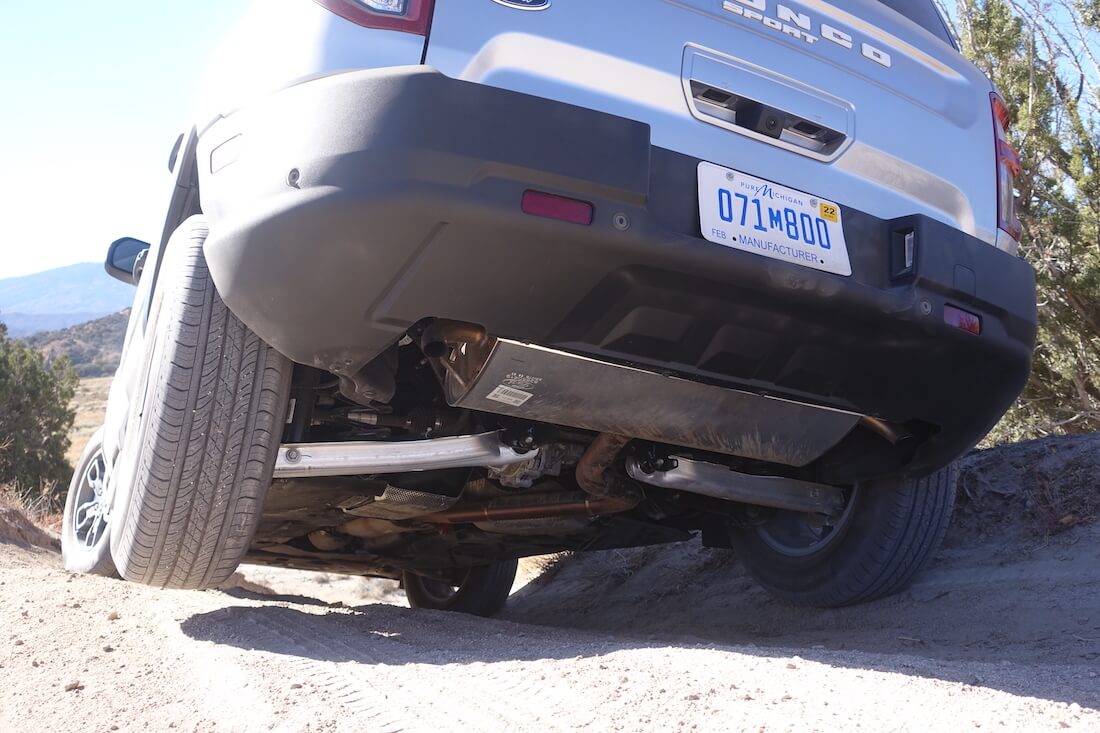
In the rear, the Big Bend uses an independent semi-trailing arm, coil spring design with an isolated steel subframe like the front. The rear suspension offers an equal 7.44-inches of wheel travel to the front. The rear axle has a differential with a single clutch limited slip.
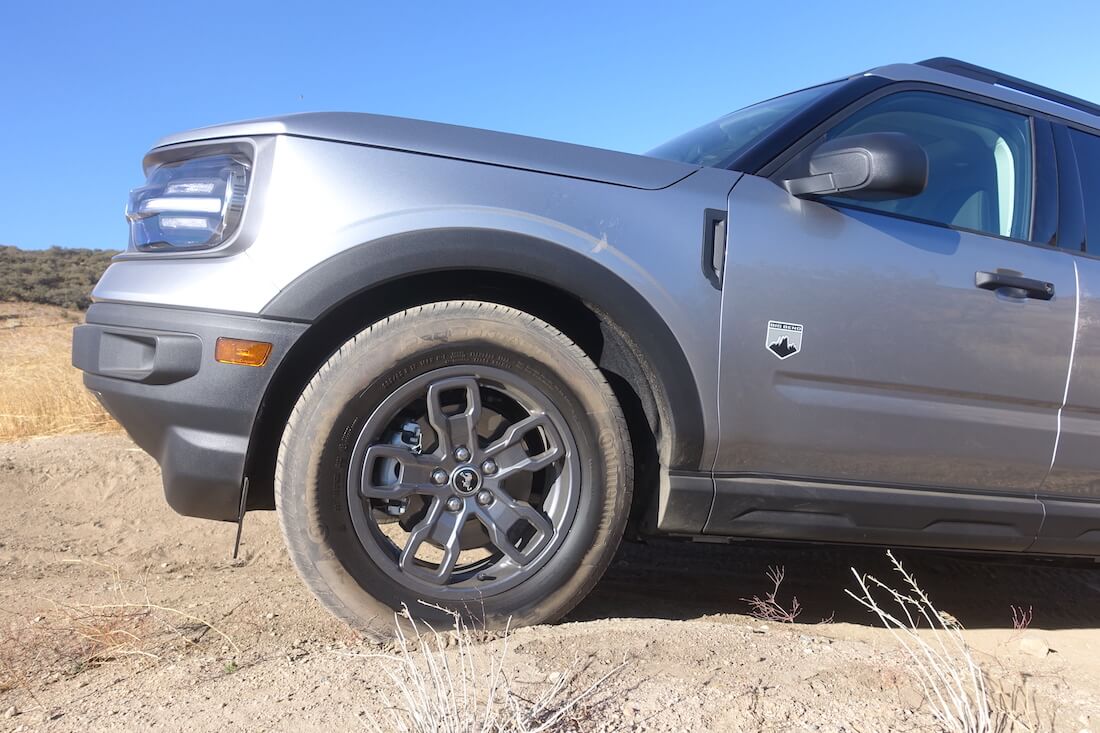
Our Big Bend test vehicle wore the standard 28-inch tall tires with mild 225/65R17 Continental Pro Contact tires. And that provides 7.9-inches of ground clearance. But those wheelwells are big. So, we did an informal examination with the front tire at full compression to see just how much room there is. With the wheels positioned straight and fully stuffed into the fender, there’s about 2-inches of room before contacting the soft, carpet-like inner fender up front. However, as the wheel is slowly turned to full lock, that number drops a bit. Still, it’s clear that the 29-inch tires would fit here and perhaps even larger ones if the vehicle was used primarily on pavement.
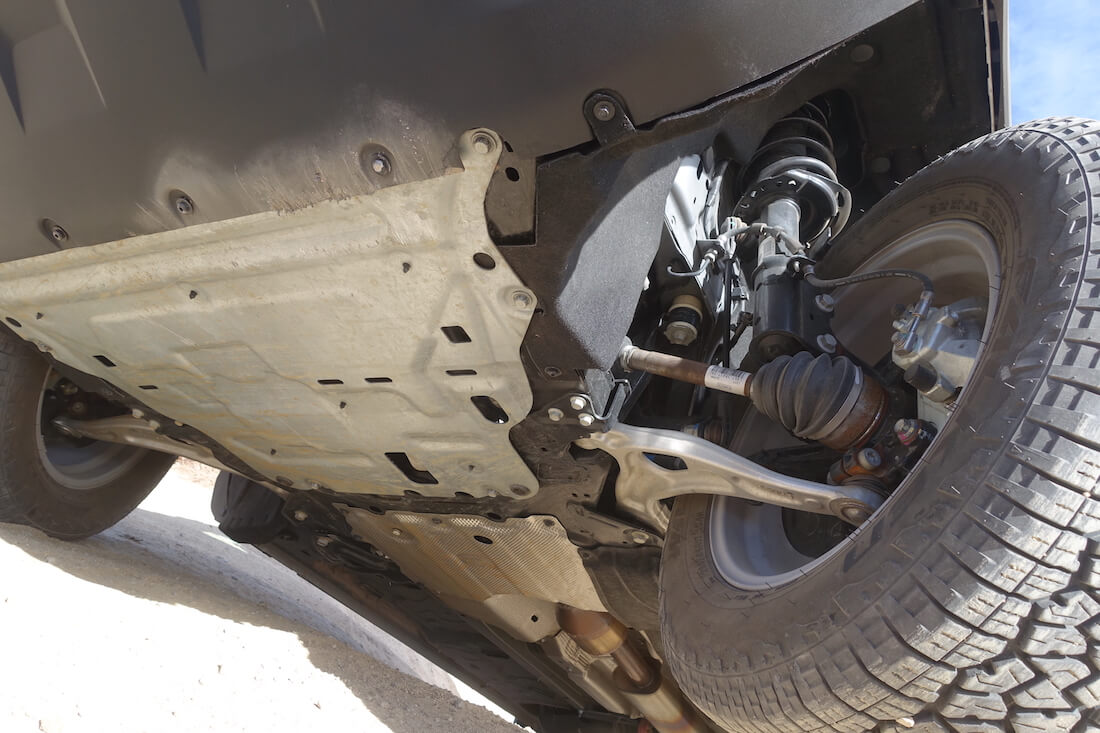
The Bronco Badlands uses many of the same mechanical bones but there are important distinctions. First, the suspension sits about an inch taller than other models according to Ford. Up front the MacPherson strut suspension has its own specific coil spring along with hydraulic rebound stops to better damp off-road impacts. The Badlands has an open differential here but the entire undercarriage is protected by steel plating. That steel is thin to be sure—but it’s there. Wheel travel remains unchanged from the Big Bend.
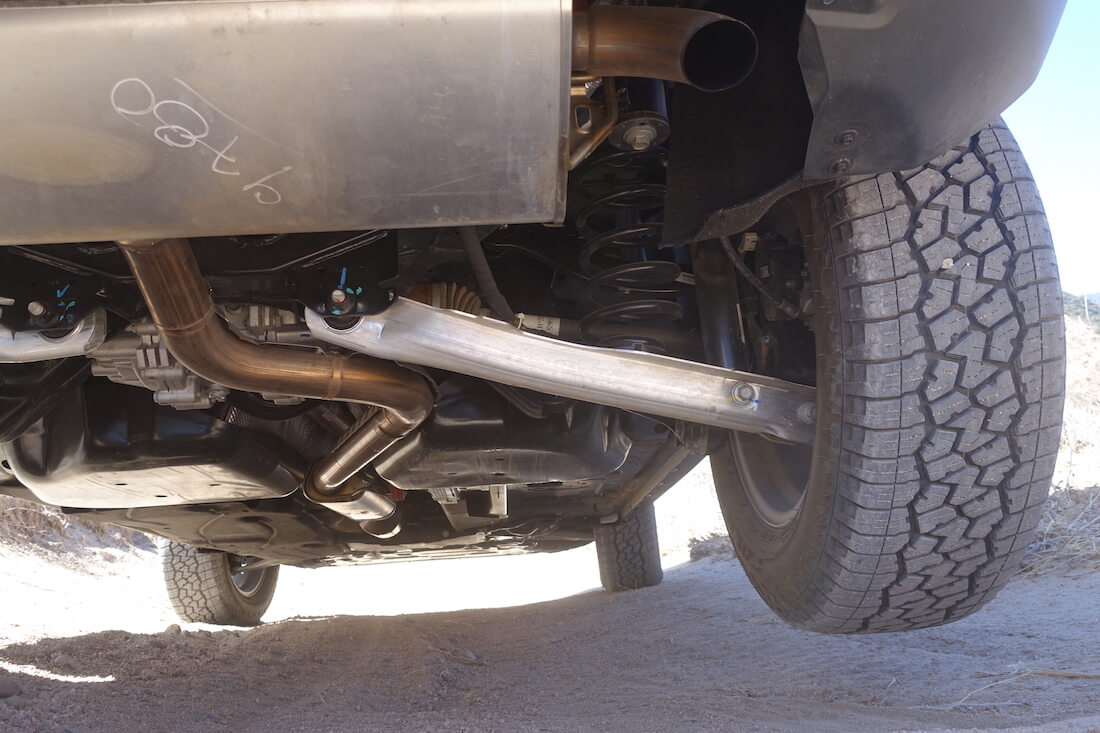
In the rear, the Badlands uses a similar independent suspension but has its own inch-taller coil springs and damper tuning. And Ford has swapped out the rear knuckles for stronger units. But the biggest difference is in the differential. The Badlands has a dual clutch unit with torque vectoring capability. It can send 100 percent of the torque to either rear wheel very quickly. And best of all, just press a button next to the mode selector knob and that differential will lock.
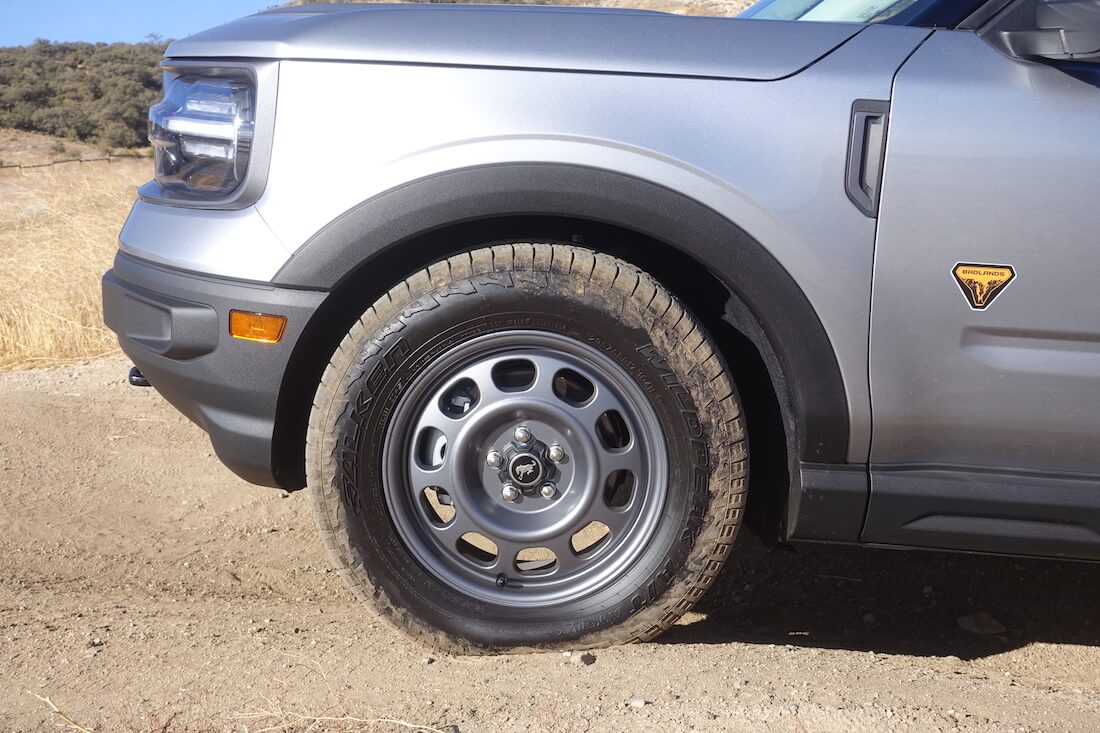
The Badlands wears larger 29-inch tall, 235/65R17 Falken Wildpeak A/T tires. And our rig had the very cool optional ($795) 17-inch aluminum wheels that look just like steel wheels. The taller tires provide 8.8-inches of ground clearance and that extra inch is welcome. But could an even larger tire fit? With the lift suspension fully compressed, there’s room with the wheel straight. Turn the wheel ¾ of the way to full lock and there’s about an inch of space between the tire and the fender liner. Go to full lock and there’s roughly .25-inch. So, depending on the tire and the backspacing perhaps a taller tire could work. A small lift would almost certainly help fit larger rubber.
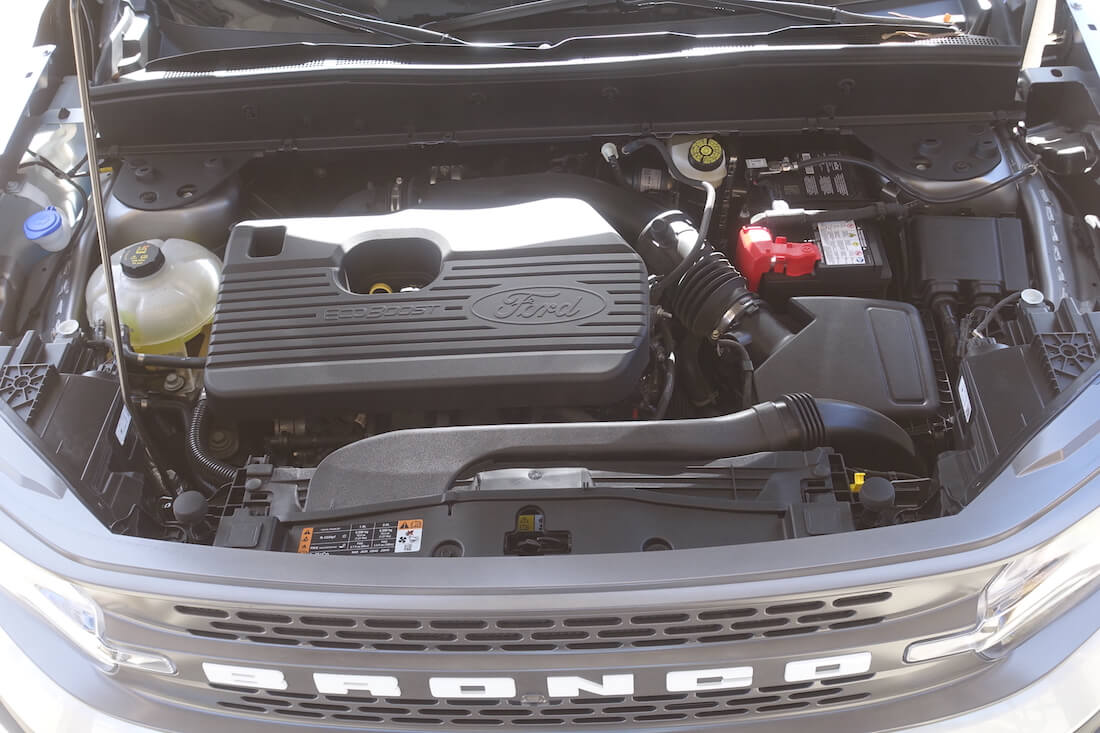
The Bronco Sport has a special air intake system and door seal system for increased water fording. The Badlands can also ford about 23.6 inches of water, while the Big Bend is limited to about 18 inches. Under the hood, every Bronco Sport except the Badlands has a 1.5-liter turbocharged Ecoboost three-cylinder engine that develops 181 hp at 6,000 rpm and 190 lb-ft of torque. The Badlands (pictured here) has its own engine—a 2.0-liter Ecoboost four-cylinder rated for 250 hp at 5,500 rpm and 277 lb-ft of torque at 3,000 rpm. Both engines are paired to a an 8-speed automatic and the Badlands model receives a manual shift mode with paddle shifters and an oil cooler for the transmission. The Power Transfer Unit (PTU) on the Badlands, which is mounted to the back of the transmission and sends torque to the rear axle is liquid-cooled instead of air-cooled on the Big Bend. Turns out—that’s important.
Unfortunately, all Bronco Sport models all have a single speed 4WD system. But the Badlands lets you manually “lock” the 4WD system into a 50/50 front-to-rear torque split. Because it’s a single-speed system with no low range, the gearing of all Bronco Sport models is limited to the 4.69:1 First gear combined with the 3.81:1 gear ratio in the diffs for a crawl ratio of just 17.9:1.
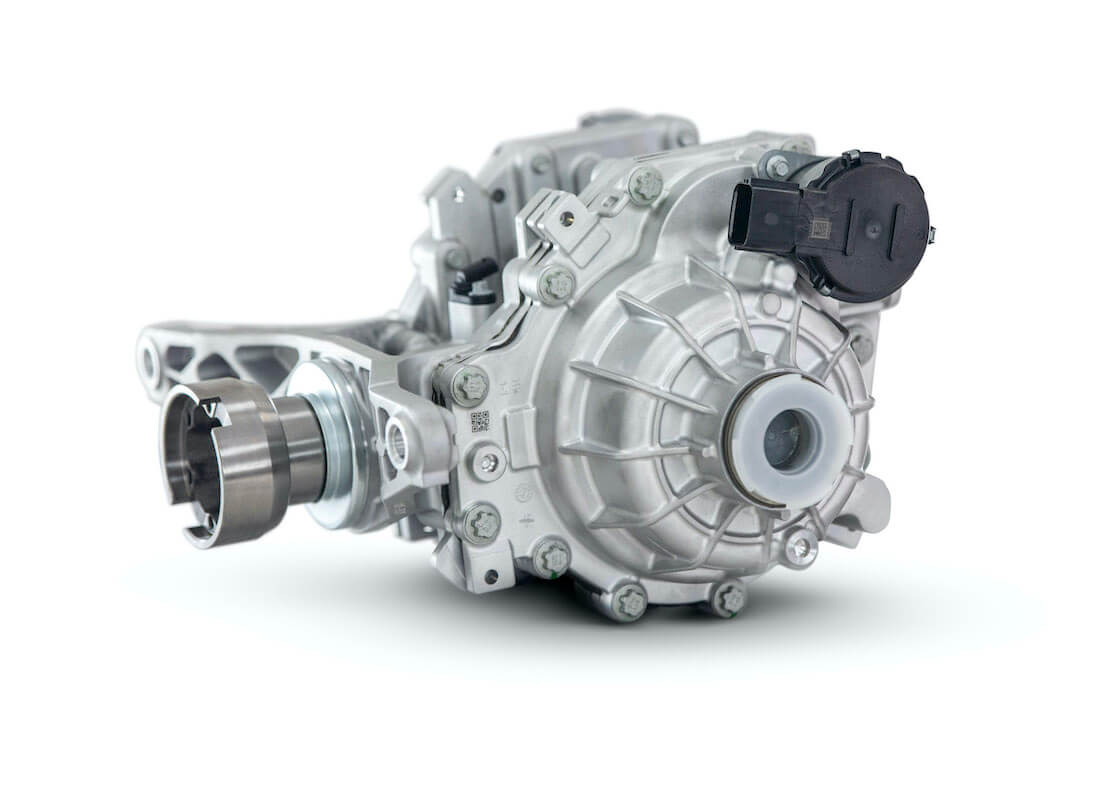
The Bronco Sport does have so called G.O.A.T (Goes Over Any Terrain) drive modes that help manage traction. The Big Bend has Normal, ECO, Sport, Slippery and Sand. The Badlands adds both Mud/Ruts and Rock Crawl modes, plus the aforementioned center diff lock (which happens automatically in some modes) and a rear diff lock to really boost the Bronco Sport’s ability to find traction.
The Bronco Sport Big Bend models weigh around 3,500 pounds and are rated to tow a 2,000 lb trailer. The Badlands can tow 200 more lbs. and weigh closer to 3,800 lbs.
On The Street
Climb aboard either one of these Broncos, and you’ll find the interior is well thought out and designed for rough usage. The rotary transmission shifter and drive mode selector knob are easy to see, and Ford puts them both right where your hand falls. No hunting into the infotainment screen like some 4X4s to change the modes. And speaking of the infotainment screen, it’s very easy to use and every Bronco Sport has an 8-inch unit with standard Apple CarPlay and Android Auto integration. We found the front seats are comfortable, although the rear seat is a little shy on legroom for taller riders. The front seatbacks have zipper pouches and loads of thoughtful storage spots are sprinkled throughout the cabin.
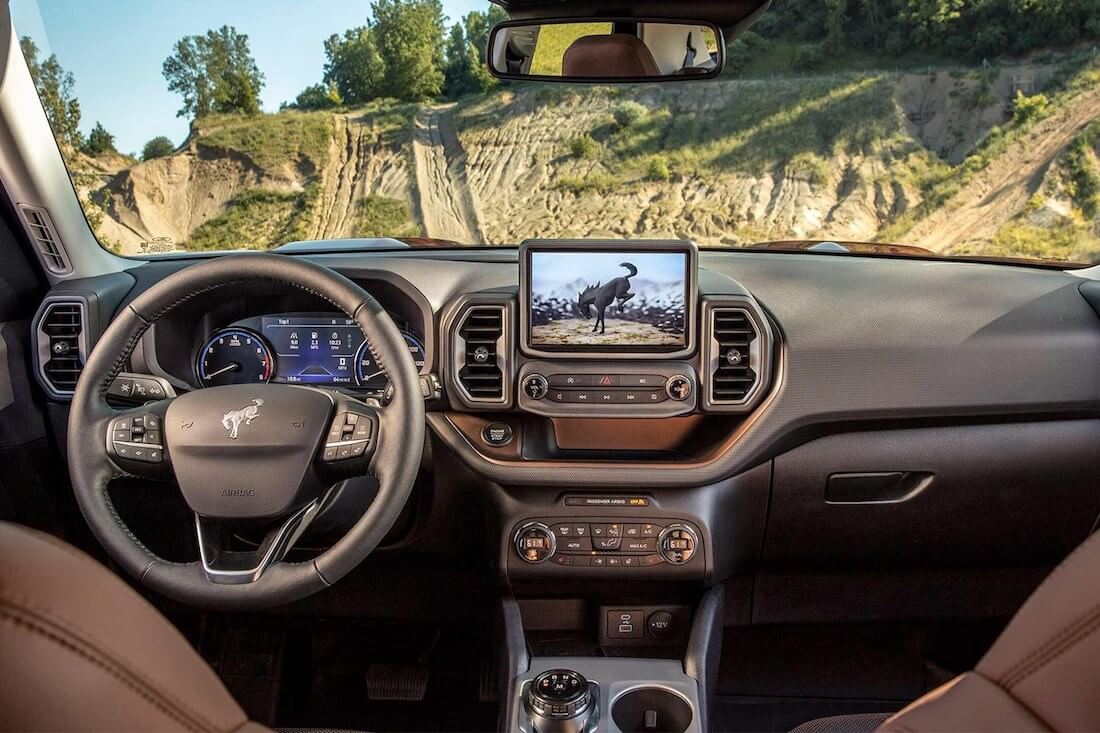
Fold down the seats and there’s over 60 cu-ft of space. The flooring in the cargo hold is rubberized with a faux diamond plate design so it will stand up to abuse. Ford says the Bronco Sport is for those that need to go off-road to get to their recreation—like rock climbers. As such, the Sport has four tie downs and four carabiner-type clips for securing gear in the cargo hold. There are adjustable flood lights in the tailgate too. And there’s a storage bin under the rear seat. Both Broncos have roof racks.
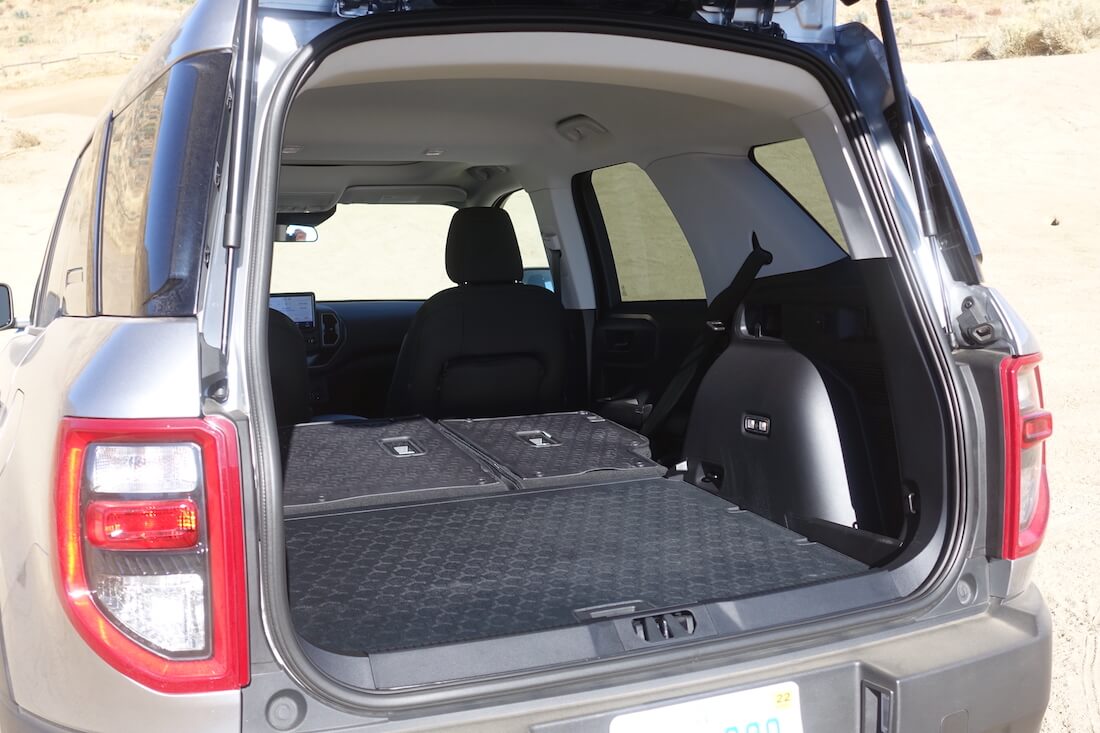
The Big Bend and Badlands are crossover SUVs. And so that lightweight construction and car-like suspension make them both ride and handle well around town. The suspension of the Badlands is a bit firmer, especially on big dips and impacts, but this is still a smooth-riding little SUV. The most important distinction between the two trim levels is under the hood.
The Big Bend’s 1.5-liter has plenty of power. You’d never know it only had three cylinders. It’s an engine that’s well-suited to the Bronco Sport. And we were able to maintain 80 mph up a steep grade fairly effortlessly with just 2,500 rpm showing on the tach. But the 2.0-liter in the Badlands is in another league. It’s like the big block upgrade in old school terms. There’s so much more power and torque—the Badlands is really quick. And after experiencing that thrust, it’s hard to go back.
The Bronco Sport Big Bend delivers 25 mpg in the city and 28 mpg on the highway. Bronco Sport Badlands returns 21 mpg in the city and 26 mpg on the highway.
On the Trail
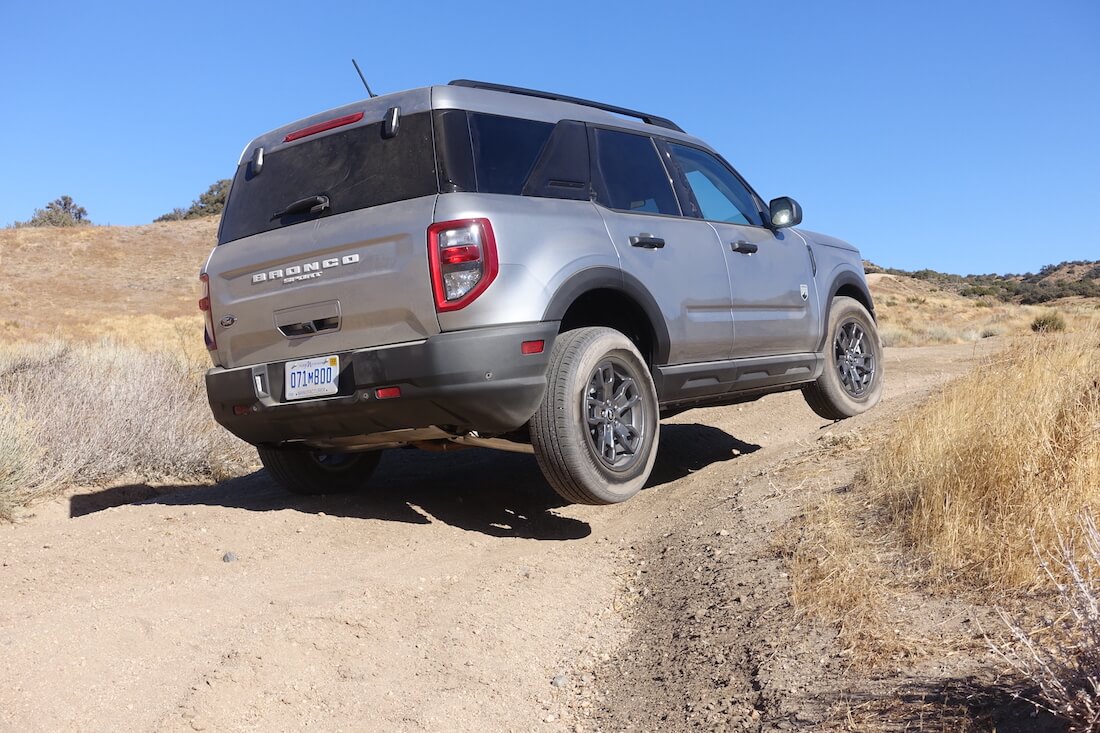
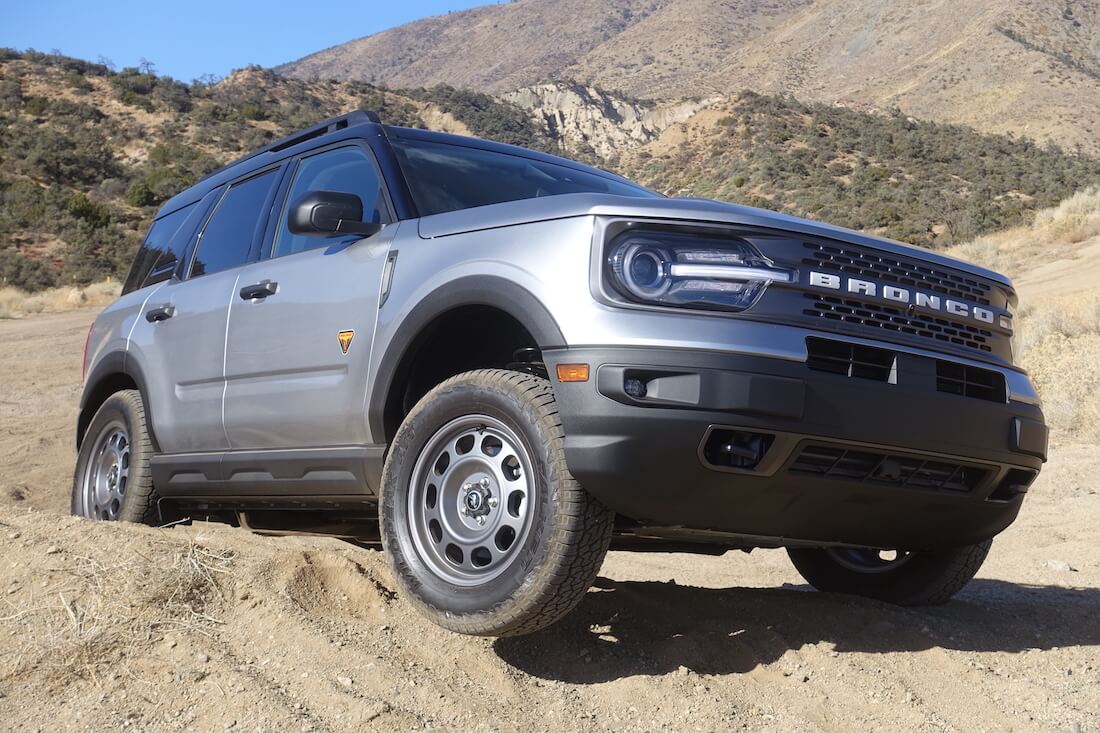
The first thing we notice when we turn off the pavement is just how low the Bronco Sport is. The Big Bend (and every other trim besides the Badlands) has a low-hanging aerodynamic lip up front. So, we got out and spotted ourselves quite a few times to make sure we don’t damage the frontend. The breakover angle is super low too. The Badlands models do benefit from some improvements in the way the bodywork is sculpted. And it comes standard with tow hooks. There’s a nearly 10-degree improvement in the approach angle and about 3 degrees in the departure angle.
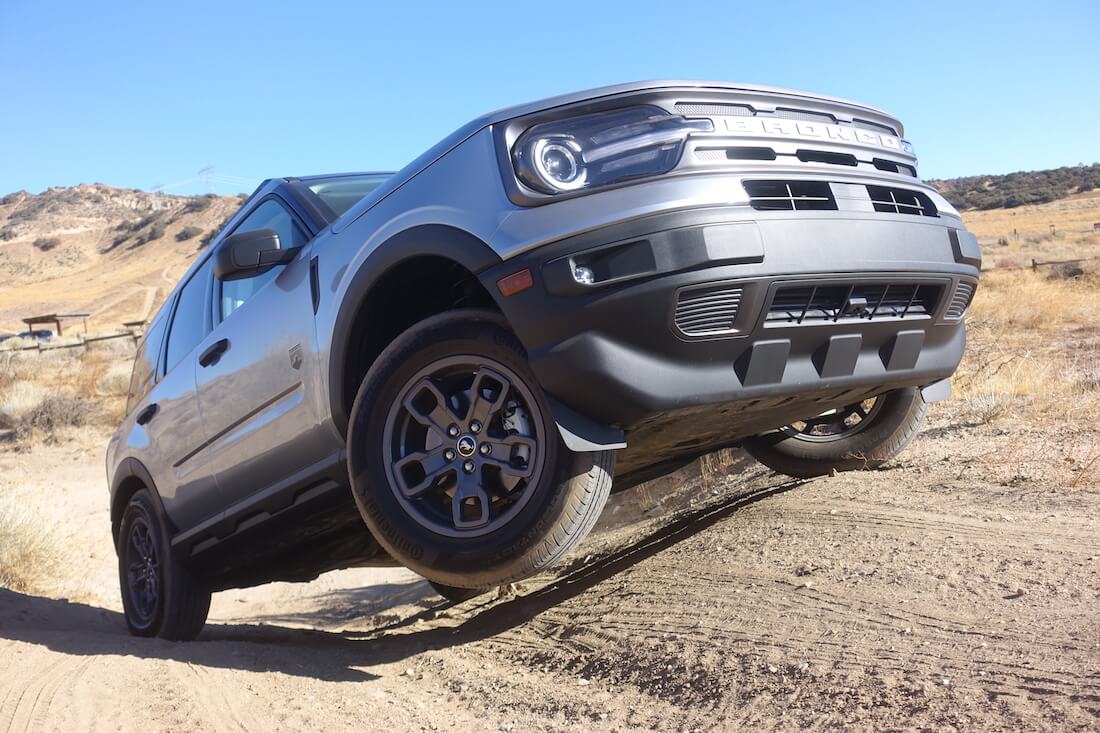
Even though it’s low, the Big Bend model had way more capability that we imagined it would. The standard 4WD system works okay but in high articulation spots where we tried to slowly crawl, Normal mode resulted in a bit too much wheelspin and hunting for traction, as did Slippery. The best mode for the Big Bend in any off-road situation we found is Sand. It seemed to transfer torque better than Normal. The traction control really works quickly and works hard to get the Sport though areas where you quickly run out of wheel travel and sky a tire into the air.
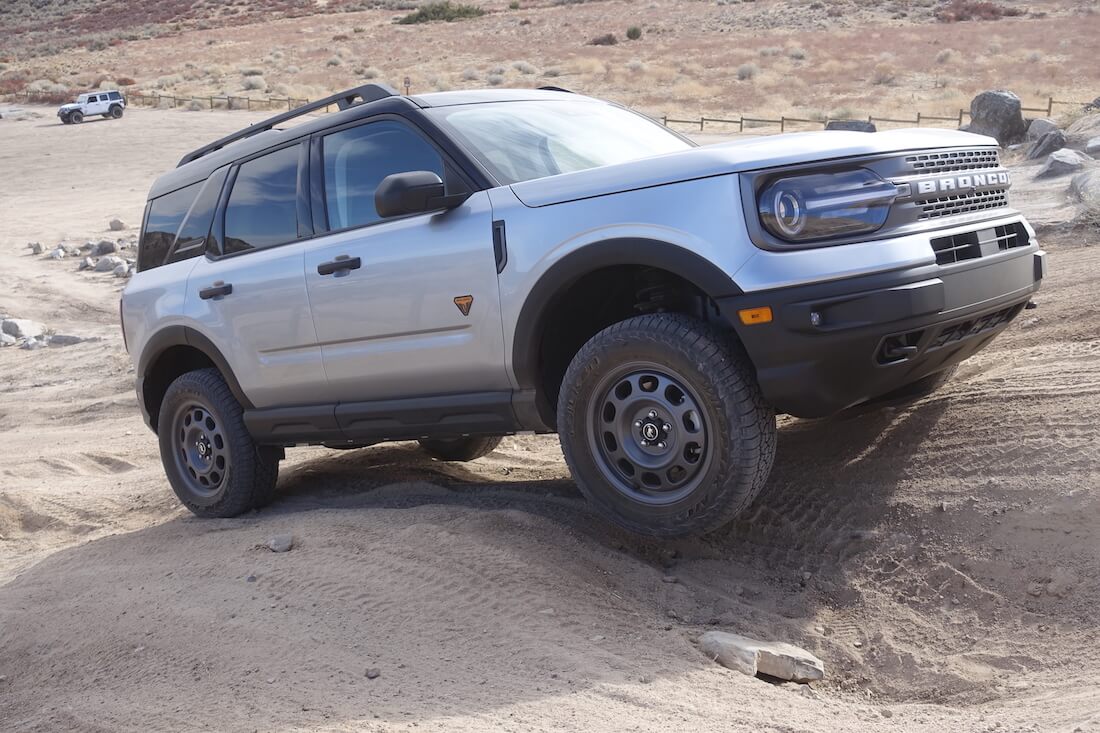
The Badlands model was a different animal. We simply clicked over to Rock Crawl mode and without any trouble, the little Bronco could crisscross ruts and climb areas we were too fearful to attempt in the Big Bend. The locking “center” diff and twin-clutch rearend really transform the Bronco Sport into a far more capable machine. Just press a button and the rear diff locks to really pull you up spots that don’t look possible for this crossover. And because there’s more clearance and protection here, you can tackle terrain you’d otherwise avoid in the Big Bend.
After playing in a few areas, we went to our hillclimb section. We crawled as slow as we could, but the little Big Bend just didn’t have the traction or gearing to make the hill—it just buried itself in the steep, soft sand partway up.
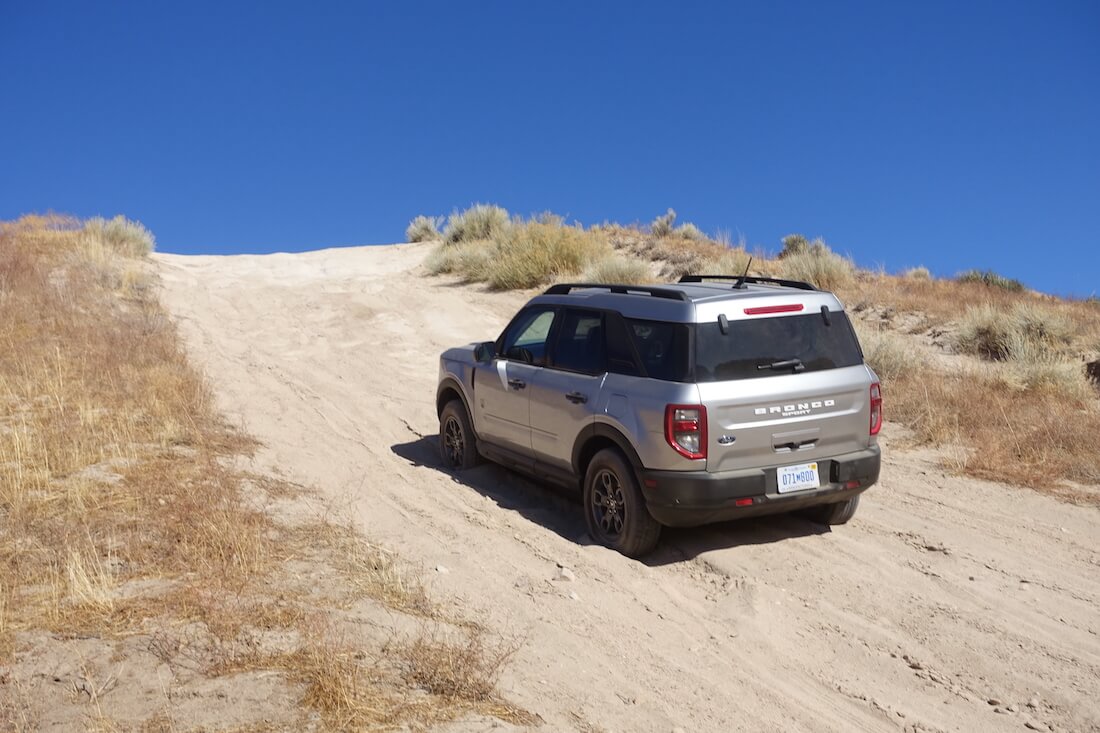
We attempted the climb again with some momentum and made it halfway before the Bronco bogged down. So, backing down the steep hill was a little scary because we were worried that front spoiler lip would get ripped right off from a rock or mound we were crisscrossing. Four-wheeling a low-slung crossover can be a challenge.
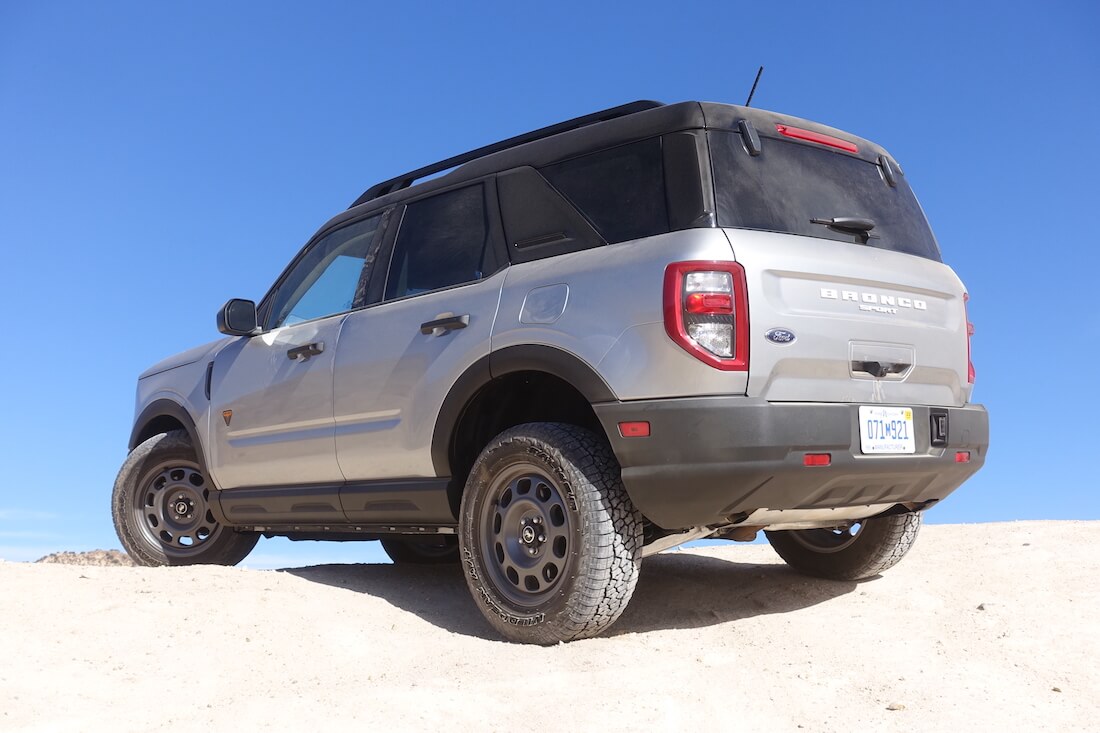
The Badlands wasn’t exactly a hill-climbing champ but it performed better than the Big Bend. In the toughest section, with Rock Crawl mode engaged and the throttle pinned (remember there’s no low range) we barely crested the peak. Take the easier line, which we attempted with the Big Bend (fail) and the Badlands walked right up. As impressive as it was, there’s just not replacement for low range gearing for elegant four-wheeling.
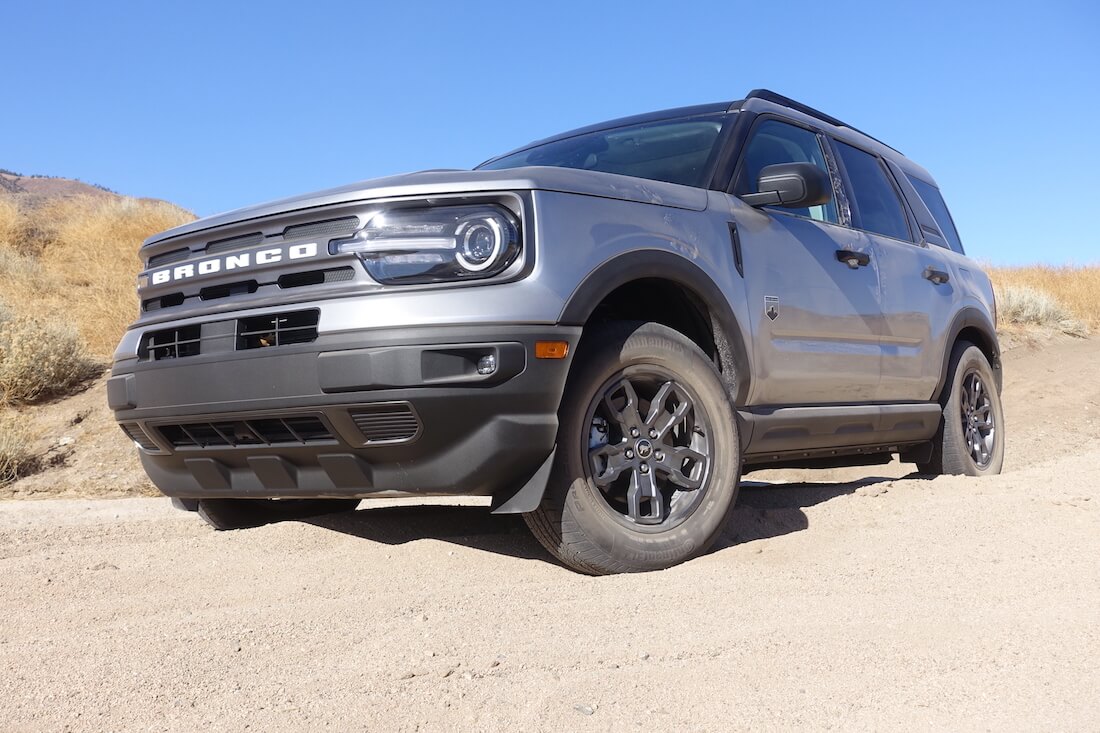
One area where the less-capable Big Bend really shone was in the sandy wash. This thing just scoots through the sand with ease. It’s super fun. Again, Sand mode here is the right choice and lets you really cruise around. You can slide it a bit and once that little turbo kicks in and you hear its whistle—the Sport really goes. But again, with no protection underneath, we had to be diligent spotting for rocks.
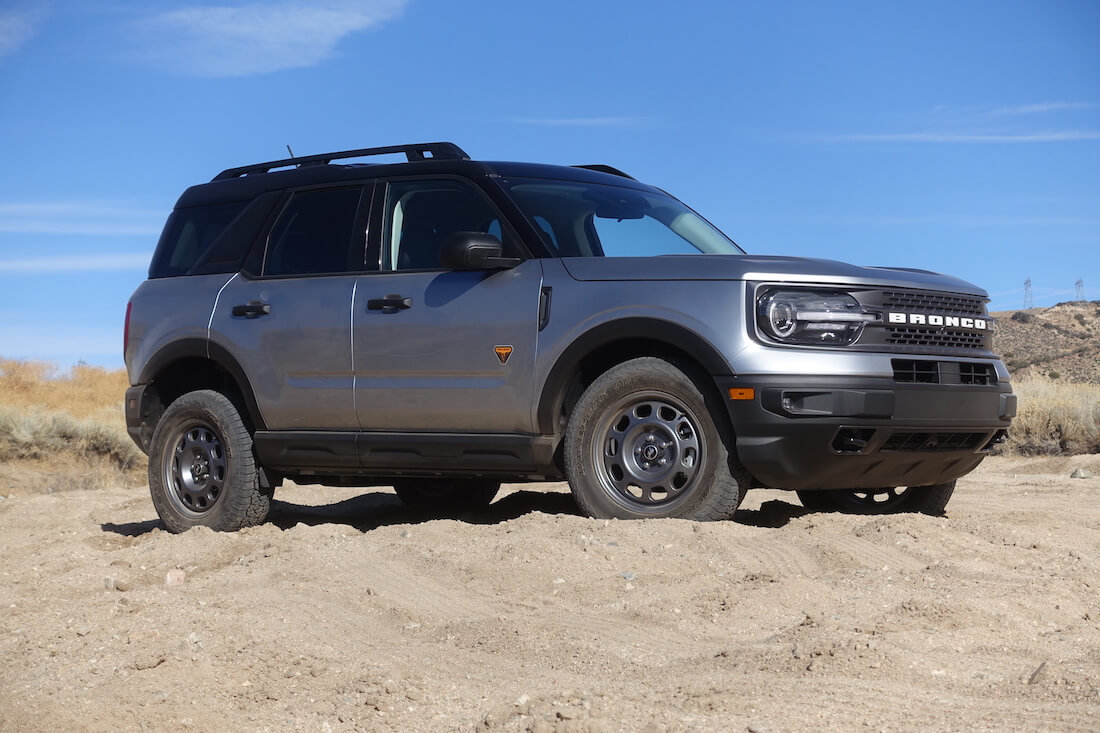
The Badlands was a sand champ too. The extra power and clearance practically doubled the fun. Pin the throttle in Sand mode and you can really pitch the Badland sideways and fishtail your way through the wash. This thing rips pretty hard. And thanks to the added clearance and protection over the Big Bend—you can push it harder. Would it be good in real sand dunes? That’s debatable but we’d be happy to air down and find out some day. Either way it’s clear, the Bronco Sport is a capable of exploring sandy washes and mild desert terrain.
On the park’s higher speed sections of Power Line Road, filled with bumps and a few whoops, the Big Bend could handle about 15-20 mph. Those whoops were more like 10 mph. It bottomed easily, despite the somewhat firm ride. And we noticed quite a bit of vibrations and jiggles resonating up through the chassis. On the same road, the Badlands could handle increased speed (about 25 mph) with far less worry about scraping underneath. And those whoops? We could hit them closer to 15 mph. Not too bad. However, the busyness in the chassis was the same as the Big Bend. Vehicles with unibody chassis tend to have worse overall isolation over terrain like this than body-on-frame rigs—and the Bronco Sport is no exception.
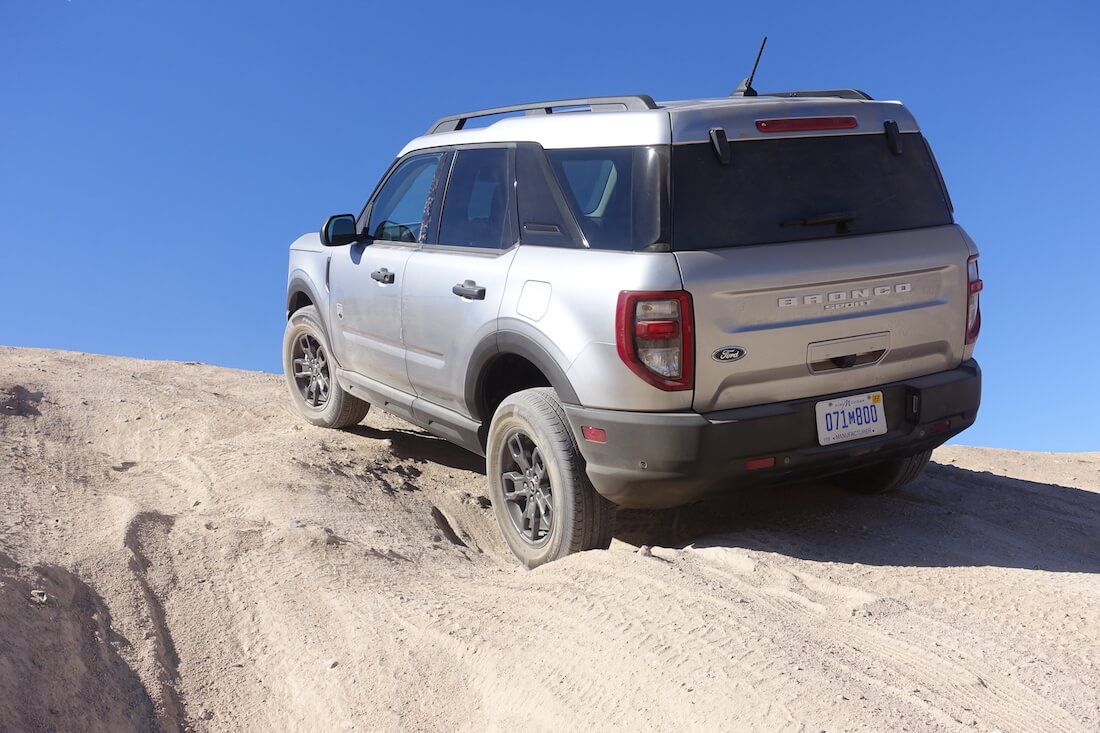
We always save the deep mogul climbs for last. These deep toughs max out a vehicle’s suspension articulation and the incline challenge’s a 4X4s traction systems. The area we typically use for low-range equipped trucks was too tough for the Big Bend. Body damage would be certain. So, we picked a much less aggressive but similar site nearby. The Big Bend was able to complete the pass using the easiest route. But later, we took the harder line and it was too much for the Sport. The Big Bend just couldn’t send torque where it needed to go, and forward progress stopped. We worked it pretty hard here. And after we backed down, the information screen displayed the message “4WD temporarily disabled”. It was clear the system had overheated because after a brief five-minute break, the message was gone, and the Big Bend performed normally again. This was not at all comforting and probably the reason why the transmission and PTU are both liquid-cooled in the Badlands.
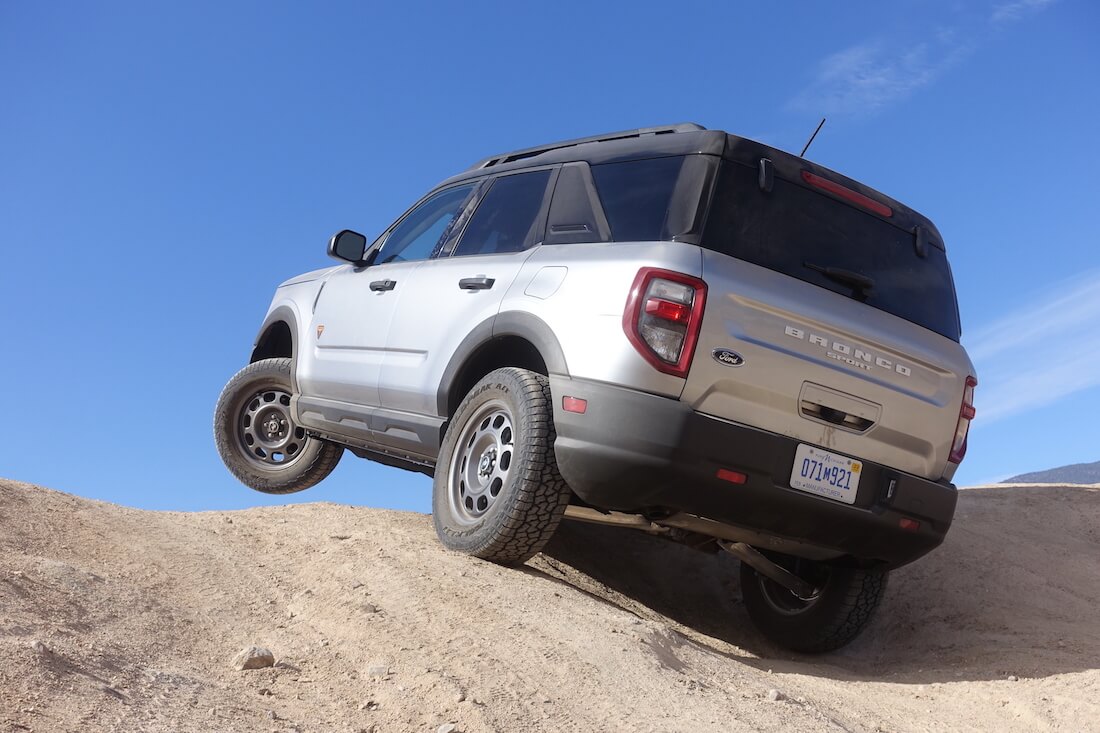
The Badlands repeatedly walked right up this mogul field in Rock Crawl mode using the harder line. It was easy. Then we tried it in Mud/Ruts got stuck. But instead of backing down, we clicked over into Rock Crawl and the Badlands pulled itself up and out without breaking a sweat. Well, that’s not entirely true—the skid plates took a beating.
The Bottom Line
The Bronco Sport isn’t really the type of vehicle you want for even medium-duty, slow-speed off-roading. Both models are just too low and don’t offer the gearing you need for slow-speed trail work. But for mild slow-speed terrain and desert exploration, the Badlands is really the Bronco Sport to have. The list of upgraded equipment and the way it performs on the trail make it far more capable. And the $4,500 price premium for the Badlands (base prices) is totally worth it. Would a lift, larger tires and skidplates help the Big Bend—yes. But you’d also have to add coolers for the transmission and PTU, that twin-clutch rear diff and additional transmission modes. And most of those upgrades just aren’t possible to add outside the Ford factory. And let’s not forget, the Badlands comes with a far more potent motor. We’d get the Badlands, lift it and add larger tires—then hit the dirt. And if you like the Bronco Sport but wish is was a bit longer and had a bed, look for a pickup version reportedly called the Maverick coming soon.



2